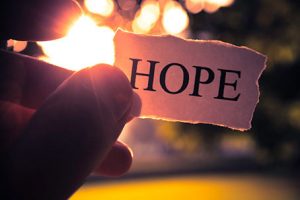
Major Depression and Bipolar Disorder
Major depression and bipolar disorder can both cause highly disabling and unpleasant episodes of depression, but in the case of bipolar disorder those episodes will eventually give way to manic states that can be every bit as debilitating. Both conditions can also produce harrowing symptoms of psychosis, which require emergency medical intervention in most instances. Mood disorders are highly amenable to treatment, and the sooner people with major depression and bipolar disorder seek diagnosis and treatment, the better their odds of recovery.
Major depression and bipolar disorder aren’t the only types of mood disorders, but they are by far the most commonly diagnosed.
In any given year, approximately 16.2 million American adults will experience the symptoms of major depression, while another 5.7 million will be afflicted with bipolar disorder. Lifetime prevalence is 17 percent for major depression and 4.4 percent for bipolar disorder. This means that about one-in-11 adults will suffer from one of these mood disorders on an annual basis, and more than one-in-five will have major depression or bipolar disorder at some point in their lives.
Both conditions can make daily living a complicated task. Mood disorders steal the emotional consistency and stability that people take for granted, and without that stability even the simplest responsibilities can be hard to manage and the most basic accomplishments a struggle to achieve.
Types of Major Depression
Major depression is a potent and pervasive disorder that inevitably produces significant life disruption.
However, there is a variant of the condition known as psychotic depression, or major depression with psychotic features, that is even more severe and disabling. People suffering from this type of depression will experience a partial or complete psychotic break with reality. They may be plagued by delusions and hallucinations that leave them confused, disconnected, and unable to care for themselves or others.
Neither major depression nor psychotic depression are likely to get better without mental health treatment. But those who experience the symptoms of psychosis face greater risks to their health and safety and can put others in danger as well, and when their psychotic symptoms reach peak intensity they may require immediate medical attention.
Types of Bipolar Disorder
While major depression causes only low moods, bipolar disorder produces depressive and manic states that replace each other in a recurrent pattern. This makes bipolar disorder the more complex condition, which is reflected in the fact it comes in five subtypes:
- Bipolar disorder I. Bipolar I is the most severe form of the disorder. It is marked by alternating periods of deep depression and intense mania, the latter of which can be physically and emotionally exhausting.
- Bipolar disorder II. Bipolar II produces depressive symptoms that are as strong and deep as those associated with major depression, but its manic states are more muted and less invasive. The less intense mania experienced by bipolar II sufferers is known as hypomania.
- Rapid cycling bipolar disorder. The familiar alternating cycle of depression and mania is present, but the duration of each state is relatively short (a person must experience two complete cycles of depression and mania/hypomania in a year to be diagnosed with rapid cycling bipolar).
- Cyclothymic disorder. Depressive and manic states are both experienced, but only in mild-to-moderate form. Cyclothymic disorder produces symptoms strong enough to be noticed and create discomfort, but not strong enough to be truly incapacitating.
- Bipolar disorder, not otherwise specified. This catchall term applies to cases of un-patterned bipolar, where depressive and manic states recur but unpredictably in terms of duration, intensity, or time gap between the cessation of one state and the onset of the other.
Most people who end up hospitalized for bipolar suffer from bipolar I or bipolar II depression, although there is enough variety in the way each version of the disorder manifests to put anyone at risk. Regardless of their severity, however, all types of bipolar disorder can be disruptive and all are a sign that treatment is needed.
Symptoms of Major Depression and Bipolar Disorder: Similarities and Differences
Bipolar I and bipolar II produce the same symptoms as major depression. Those symptoms include:
- Chronic fatigue
- Low energy levels
- Pervasive loss of motivation
- Feelings of emptiness or that the world is meaningless
- Muted emotional responses
- Unusual sleeping patterns (sleeping too much, too little, or at strange hours)
- Pessimism and cynicism about the world and the intentions of others
- Decreased self-esteem and self-confidence
- Feeling powerless or helpless to change
- Inability to take pleasure in previously enjoyable pastimes
- Chronic pain in the muscles of the neck, face, and/or back (a sign of constant muscle tension)
- Reclusiveness, preferring isolation to socializing
- Talking or thinking about suicide
While the depressive states associated with major depression usually don’t disappear without treatment, episodes of bipolar depression have a definite duration. But when bipolar depression lifts it is not good news, because it means a manic episode is coming and usually coming soon.
The symptoms of bipolar mania can seem like a relief at first, coming on the heels of depression. But their strength and persistence can eventually make them unbearable.
The symptoms of bipolar mania include:
- Constant, intense euphoria
- Restlessness, vague feelings of anxiety
- Inability to sit still, concentrate, or focus
- Irritability and a hair-trigger temper
- Rapid, often incomprehensible speech
- Racing thoughts
- An irrepressible need to keep moving or doing something
- Insomnia and decreased sleep in general
- Feelings of great power and invincibility
- Impulsiveness or reckless behavior
- High emotional sensitivity and vulnerability
Like major depression, bipolar disorder can occasionally produce symptoms of psychosis. All varieties of bipolar can conceivably do so, but this side effect is usually experienced either by bipolar I sufferers during intense depressed or manic states, or by bipolar II sufferers ensnared in the depths of a depressive episode.
Psychosis is not a form of mental disorder in and of itself, but is instead a symptom that indicates the presence of another disorder. Psychosis produces delusions and hallucinations that make sufferers unable to tell the difference between what’s real and what isn’t, and their distorted or illusory view of reality can cause irrational (and often dangerous) behavior that demonstrates deep distress.
Begin Your Recovery Journey Today.
619-466-0547Common Co-Occurring Disorders
There is a close relationship between mood disorders and anxiety disorders, and it is common for people with depression or bipolar disorder to also have a history of anxiety problems.
Each of the anxiety disorders (social anxiety disorder, PTSD, generalized anxiety disorder, panic disorder, OCD, and specific phobias) is more likely to occur in someone who also suffers from a mood disorder. This predisposition has its roots in shared risk factors, which include:
- Family history of mental health disorders
- Hyperactivity or other types of dysfunction in areas of the brain involved with stress response and emotional control and management
- Exposures to childhood abuse or other types of intense trauma
- Negative or pessimistic personality traits, possibly (but not necessarily) connected to a personality disorder
Many patients who suffer from a mood disorder will eventually receive a dual diagnosis for a substance use disorder (SUD) as well. In one large-scale study, the lifetime SUD rates for bipolar sufferers was 56 percent, while 16.5 percent and 18 percent of people with major depression had been diagnosed with an alcohol use disorder or drug use disorder, respectively.
Complications in Diagnosis
Since major depression and bipolar disorder can produce the same symptoms of depression, diagnosing the correct illness can be a challenge for mental health professionals. If an individual seeks treatment for serious depression after suffering for an extended period, major depression would be the most likely source of the problem—but bipolar I or II could be responsible.
In fact, in the past bipolar disorder was often misdiagnosed as depression. This does still happen, but fortunately mental health professionals have learned from their mistakes and are now more careful about screening for symptoms of mania when they visit with depression patients.
Ultimately, it is up to patients to report any and all symptoms they may have experienced, no matter how isolated or brief in duration, and if they should begin to suffer manic symptoms after receiving a diagnosis for major depression they should return to their clinician immediately for re-evaluation.
Because treatment methodologies differ, the distinction between major depression and bipolar depression is not trivial. Bipolar disorder and depression are not the same condition, and treatment is unlikely to be effective over the long-term if the wrong disorder is diagnosed.
Differences in Treatment for Major Depression and Bipolar Disorder
Both conditions respond well to regular and sustained psychotherapy, which should figure prominently in any treatment regimen aimed at a mood disorder. But there is a divergence between the medications recommended for major depression and bipolar disorder.
Antidepressants are standard in treatment for depression, but they must be used cautiously (if at all) in patients undergoing treatment for bipolar disorder. By counteracting the neurological effects of depression, these medications can sometimes trigger manic episodes in people with bipolar disorder, and for that reason antidepressants are only recommended for bipolar depression if other drugs haven’t been working.
Mood stabilizing drugs like lithium are the preferred choice for bipolar sufferers, with antipsychotic drugs another option if symptoms of psychosis are experienced. Antipsychotics or electroconvulsive therapy (ECT) may be prescribed for people suffering from psychotic depression as well, as a supplement to the use of antidepressants.
Regardless of the differences in specific treatment, people suffering from major depression or bipolar disorder should begin their recovery in an inpatient treatment program offered by a licensed mental health treatment facility. This is especially true if they have a dual diagnosis for a mood disorder and a substance use disorder, and it is absolutely vital for recovery if the frightening and debilitating symptoms of psychosis have been experienced.
The prospects for recovery from any mood disorder are highly favorable, if patients are committed to healing and willing to follow the advice and instructions of qualified mental health professionals. Residential treatment is an important first step, but people recovering from major depression or bipolar disorder must also remain vigilant and engaged throughout their continuing care and aftercare programs.






